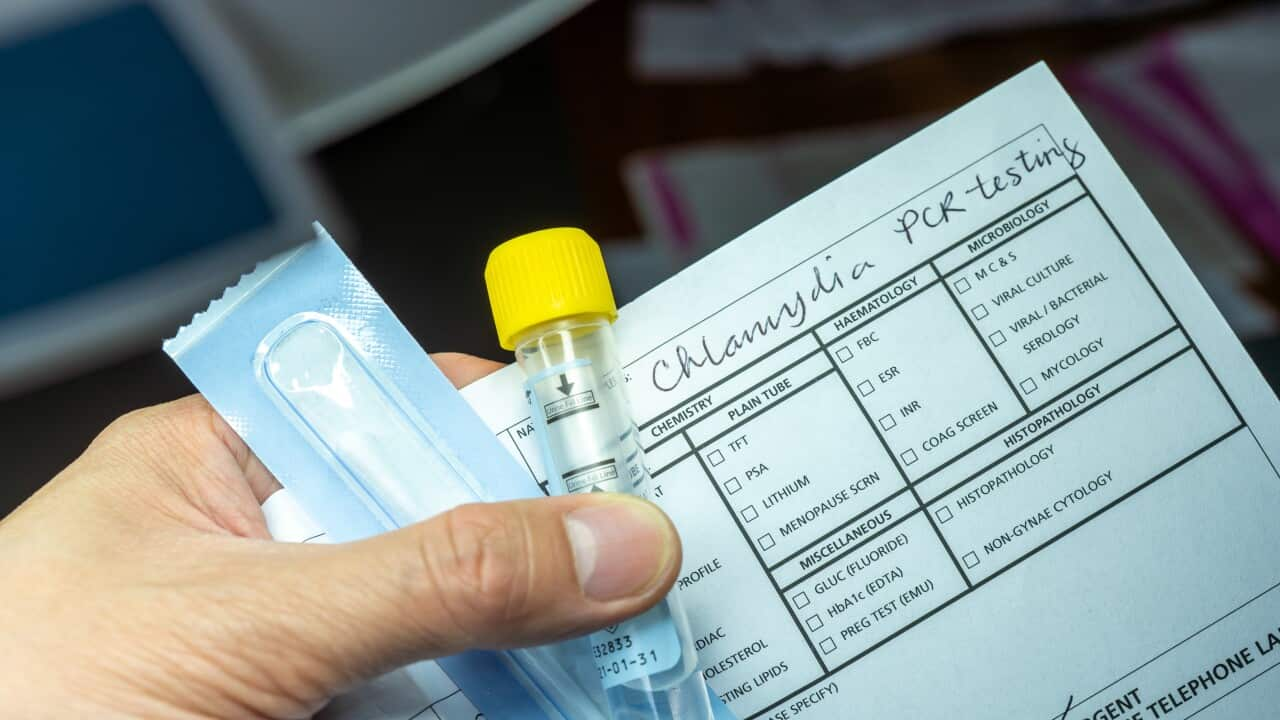Key Points
- The TGA has approved Australia’s first self-test kit for chlamydia and gonorrhoea for women.
- The self-test kit detects infection with one swab sample and produces results in 15 minutes.
- It does not test for oral or anal infection, or for other STIs.
The Therapeutic Goods Administration (TGA) has approved Australia's first rapid self-test kit for chlamydia and gonorrhoea in women, and the tests are expected to be available within weeks.
The test kit was developed by Sydney-based Touch Biotechnology and detects the sexually transmitted infections with one swab sample, producing a positive or negative result for both within 15 minutes.
Matt Salihi, CEO of Touch Biotechnology, said increased access to accurate, private testing would empower women and aid in STI prevention.
"It marks significant progress in improving the options for female sexual health in Australia, hopefully reducing the number of infections that go undiagnosed and enabling more people to receive appropriate and timely treatment for infection that prevents further health complications," he said.
"It’s incredibly important for women, and men, to consider the risks of unprotected sex because despite the perceived stigma, STIs impact so many Australians amounting to much more than uncomfortable symptoms."
But experts have warned it's important to understand the limitations of the test, which does not check for oral or anal infections or other STIs.
Dr Matt Mason, a lecturer in nursing at the University of the Sunshine Coast School of Health, said a negative test result can give people a "false sense of security".
"You're obviously testing for a reason and if you get a negative result you might say 'oh, I'm in the clear', but it could be something else," he said.
"And you haven't got that engagement with a health professional to look at taking that complete history in a full examination, so there does need to be some care given around a negative result."
He said anybody experiencing symptoms should consider speaking to a health professional, even if they have had a negative result in a home test.
"Symptoms of an STI can be related to symptoms of non-sexual infections such as candidiasis or a urinary tract infection or even a dermatological condition," he said.
"So if they get a negative result and they've still got symptoms or a reason to be testing, then there needs to be a consideration around more holistic care."
Emma Miller, adjunct associate professor at the Stretton Health Institute at the University of Adelaide, described the tests as a "double-edged sword".
She said while the tests could empower people to take control of their health, there could be some downsides, including user error.
"We can't be sure that they are completely accurate because no test is, so you might be raising false hope and preventing people from getting care," she said.
“The second thing that is a bit of a worry is if you found that you had a positive test, there needs to be very strong guidelines about what to do next if that occurs … because you will need to go to a medical practitioner and commence antibiotics as soon as possible."
Miller said anybody who receives a positive test result also needs to start the process of contacting their previous sexual partners and contact tracing.
What are the symptoms of chlamydia?
Many people do not display symptoms of chlamydia and may have it for months or years without knowing. Those who do get symptoms usually begin experiencing them within two to 14 days after being infected.
In women, it can cause changes in vaginal discharge, vaginal bleeding or spotting, burning or stinging when urinating, pain during sex, and cramps or pain in the lower stomach.
If left untreated, it can cause complications such as infertility and chronic pain.
In men, it can cause clear or 'milky' discharge from the penis, redness, testicular pain, and stinging when urinating.
What are the symptoms of gonorrhoea?
In women, the most common gonorrhoea symptoms are unusual vaginal discharge, pain or burning during urination. Some people might also experience bleeding after sex or between periods, and pain in the lower abdomen area.
In men, symptoms can include inflammation of the foreskin, pain when urinating, and unusual discharge from the penis.
How common are STIs?
According to the Department of Health and Aged Care, about one in six Australians will get an STI in their lifetime.
But they appear to be on the rise.
A report released in found chlamydia has increased by 12 per cent since 2013.

Rates of some STIs are increasing in Australia. Source: Getty / Morsa Images
According to analysis of data from the National Notifiable Diseases Surveillance System in 2023, infections are most common in young people, with the 15 to 29 age group accounting for 67 per cent of chlamydia infections and 50 per cent of gonorrhoea infections in 2023.
Miller from the University of Adelaide said while self-testing should be done with caution, ultimately she believes it is a positive development for sexual health.
"Any opportunity for self-testing that gets people talking about this, that puts them less at risk and improves their sexual health, is something that is good," she said.
"But it needs to be used with caution, it needs to be used with appropriate advice about where to go next, and it also should never be a substitute for talking about prevention in the first place."












